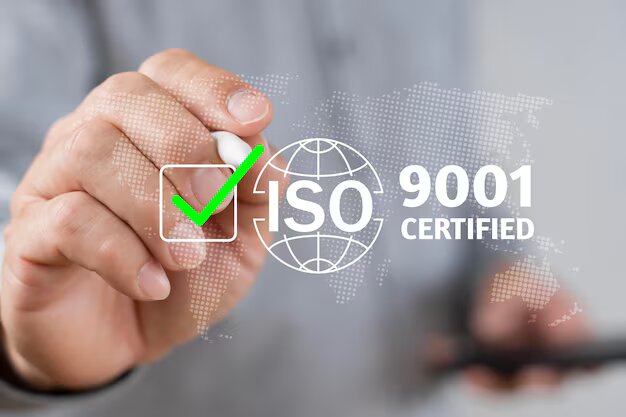Achieving and maintaining ISO 9001 certification is a significant accomplishment that demonstrates a commitment to quality management within an organization. However, certification is only the beginning; consistent efforts are required to maintain compliance and continually improve your quality management system (QMS). In this blog, we will discuss some best practices to help your organization uphold its certification and reinforce quality practices.
Understanding the Importance of Maintaining ISO 9001 Certification
Maintaining ISO 9001 certification is not only following set standards but also an expression of commitment to constant improvement in quality and customer satisfaction. For organizations operating in competitive markets, especially in a country like India, holding a valid ISO certification in India gives an impression of credibility, operational efficiency, and commitment to quality. Moreover, an efficiently maintained QMS further fortifies the organizational processes, reduces risks, and enhances stakeholder confidence. The regular maintenance of certification standards also facilitates smooth operation, effectiveness at low cost, and employee engagement. This makes continuous effort necessary to maintain the certification active and useful.
Best Practices for Compliance
1. Regular Internal Audits
Internal audits are a cornerstone of ISO 9001 certification maintenance. They allow organizations to assess processes, identify areas for improvement, and ensure that all operations comply with the established QMS. Scheduled audits, ideally conducted quarterly, help in catching any lapses in compliance early. Regular audits also prepare your team for external audits by familiarizing them with audit protocols and requirements.
2. Continual Improvement
The spirit of ISO 9001 certification is not about meeting standards but about ways to improve processes. This principle is known as continuous improvement, which is about proactively seeking inefficiencies, potential risks, and areas where quality can be improved. Teach your team members to encourage changes that may improve the quality, efficiency, or safety of your QMS. By encouraging a culture of improvement, you ensure your QMS grows with your organization.
3. Employee Training and Awareness
A well-trained team is necessary for continual compliance. Quality standards, best practices, and updates in ISO certification in India can often be brought home through consistent training sessions. This continues to update all employees concerning requirements and gives them appropriate training on quality management responsibility in departments.
4. Engage in Regular Communication with Stakeholders
Keeping all stakeholders informed about your organization’s quality goals and achievements ensures transparency and fosters a sense of responsibility among employees, suppliers, and customers. Regular communication about the benefits of ISO certification in India encourages all involved parties to adhere to and support quality standards.
5. Update Documentation Consistently
Documentation is critical in a QMS, providing a clear roadmap of processes, procedures, and policies. Consistent and thorough documentation makes tracking compliance and resolving issues as they arise easier. Ensure that all records are accurate, up-to-date, and aligned with the requirements of ISO certification in India. Reviewing and revising documentation keeps the system organized and ready for external audits.
Let’s Sum Up
Following these best practices could mean that the organization remains compliant with ISO 9001 and continues to improve upon quality management. Certification is a continuous effort, but the results—reputation, customer satisfaction, and operational efficiency—are definitely worth it.
INTERCERT offers total support and services to organizations seeking expert help in maintaining or achieving ISO 9001 certification. Our professionalism will prepare you for auditing and continuous improvement practices. Therefore, contact us now to discover how we can assist you on your journey to ISO.
A PHP Error was encountered
Severity: Notice
Message: Undefined variable: clientlist
Filename: views/blog_view.php
Line Number: 67
Backtrace:
File: /home/sysintercert/public_html/application/views/blog_view.php
Line: 67
Function: _error_handler
File: /home/sysintercert/public_html/application/controllers/Blogs.php
Line: 41
Function: view
File: /home/sysintercert/public_html/index.php
Line: 316
Function: require_once
A PHP Error was encountered
Severity: Warning
Message: Invalid argument supplied for foreach()
Filename: views/blog_view.php
Line Number: 67
Backtrace:
File: /home/sysintercert/public_html/application/views/blog_view.php
Line: 67
Function: _error_handler
File: /home/sysintercert/public_html/application/controllers/Blogs.php
Line: 41
Function: view
File: /home/sysintercert/public_html/index.php
Line: 316
Function: require_once

